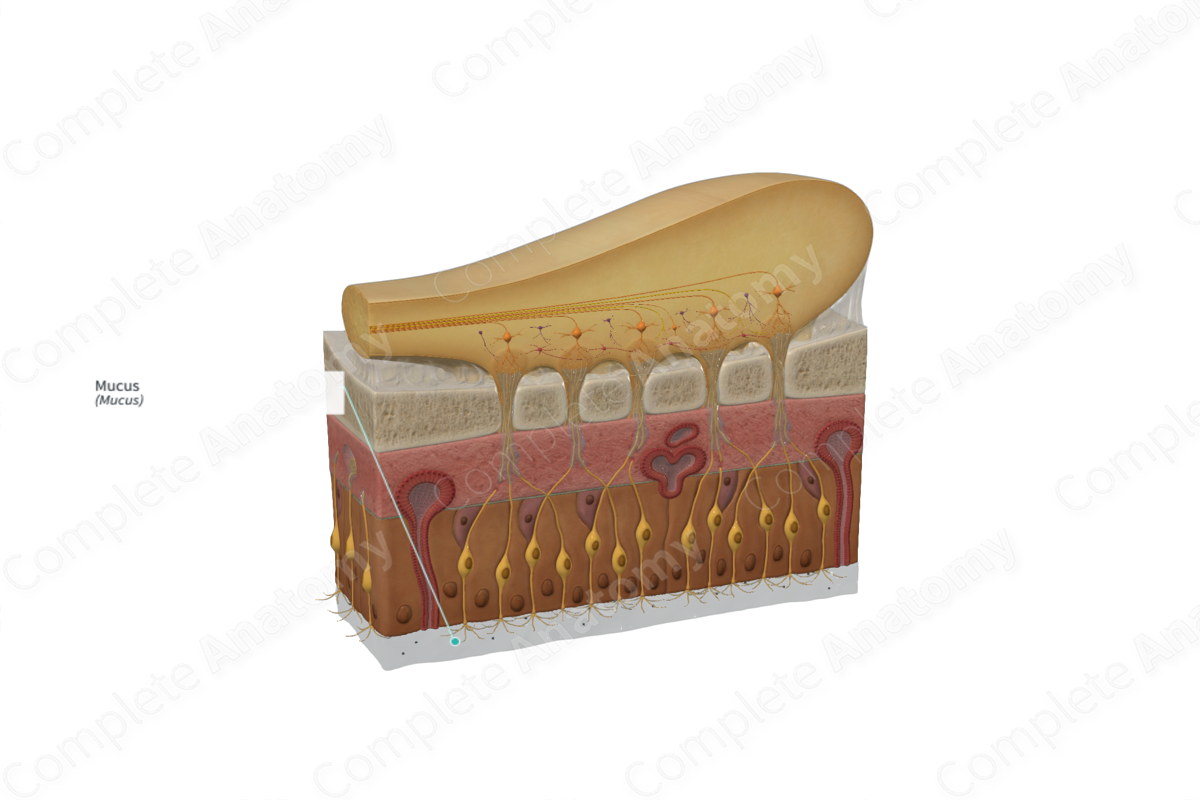
Quick Facts
Mucus is the free slime of the mucous membranes, composed of secretion of the glands, along with various inorganic salts, desquamated cells, and leukocytes (Dorland, 2011).
Structure and/or Key Features
Mucus is a thin, transparent fluid produced by the epithelial lining of many body tissues. It is composed mainly of high molecular weight glycoproteins (Parke, 2013).
The nasal mucus is secreted by mucus and serous glands in the lamina propria and epithelial goblet cells. It can be grouped into two categories, neutral glycoprotein (fucomucin) and acidic glycoproteins (sialomucin and sulfomucin) (Liron et al., 1998).
Anatomical Relations
There is a mucus layer situated at the base of the olfactory epithelium. The olfactory epithelium is made up of olfactory bipolar olfactory sensory neurons and supporting cells. The dendrites of the olfactory sensory neurons project through the olfactory epithelium to form olfactory cilia, which in turn extends into the layer of mucus secreted by the supporting cells (Longstaff, 2005).
Function
Mucus layer overlying olfactory epithelium acts as a medium onto which odor molecules are absorbed. The odor molecules bind the odor-binding proteins in the mucus. Within this mucus medium, the odor-binding proteins concentrate the odor molecules which are subsequently able to reach the olfactory cilia (Longstaff, 2005).
The mucus also serves as a filter for inhaled air; trapping irritants such as dust, smoke particles, bacteria, etc. Furthermore, the mucus serves as a shield for the epithelial layer, protecting the layer from damage caused by drying, extreme temperatures, infectious organisms, and non-infectious particles (Farbman et al., 1992).
Clinical Correlates
—Cystic fibrosis
—Acute respiratory distress syndrome
—Asthma
—Fucosidosis
References
Dorland, W. (2011) Dorland's Illustrated Medical Dictionary. 32nd edn. Philadelphia, USA: Elsevier Saunders.
Farbman, A. I., Bard, J. B. L., Barlow, P. W. and Kirk, D. L. (1992) Cell Biology of Olfaction. Developmental and Cell Biology Series: Cambridge University Press.
Liron, N., Ostfeld, E., Priel, Z. and Roth, Y. (1998) Cilia, Mucus, and Mucociliary Interactions. Taylor & Francis.
Longstaff, A. (2005) Neuroscience. BIOS instant notes 2nd edition: Taylor & Francis.
Parke, D. (2013) Mucus in Health and Disease. Advances in Experimental Medicine and Biology: Springer US.
